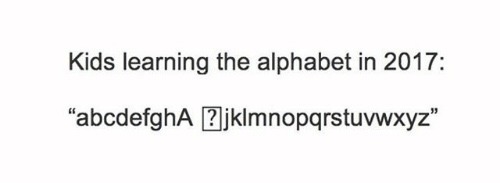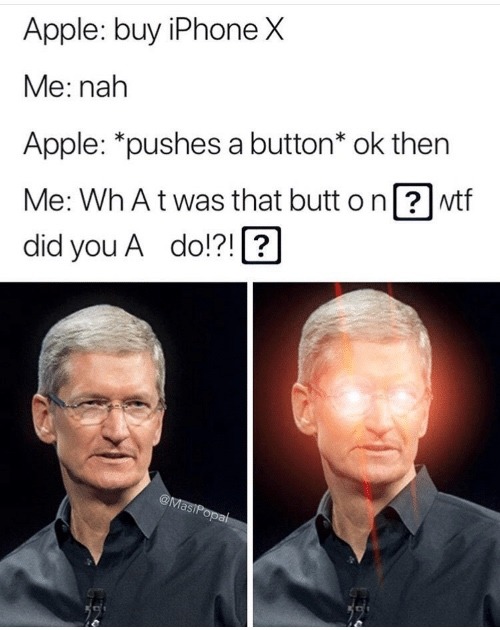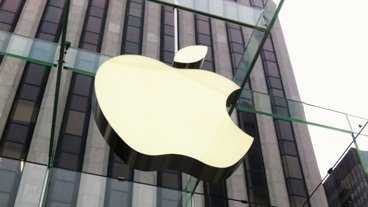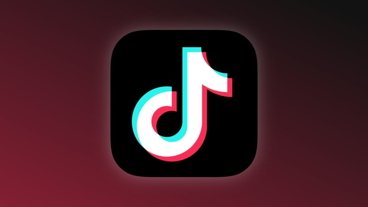An iOS QuickType and autocorrect bug replacing the letter "i" with the letter A and a strange character has seemingly spread, despite the fact that no software updates have arrived. Its persistence raises questions as to what exactly is causing the autocorrect issue to proliferate — and is also drawing jokes on social media.
Until Apple fixes this phone issue Me guess Me will talk like this.
— Jay-D (@_ItsJust_JORDAN) November 4, 2017
The bug, while an annoyance, is obviously not a major concern for most users, who are making light of the situation on Twitter, Facebook and through memes.
The @AppleSupport account on Twitter has been on top of the issue, responding to countless complaints and letting users know that a fix is on the way. In fact, the latest beta of iOS 11.2 addresses the problem, though it is unclear when the final update will arrive for members of the public.
fixed it pic.twitter.com/r3ljETuugg
— Jeremy Burge (@jeremyburge) November 6, 2017
Oddly, the bug goes back to earlier builds of iOS 11, but also went unnoticed or unexperienced by many for some time. Over time, anecdotal experience suggest it seems to have spread, though there are no clear answers as to how or why.
One potential theory is that Apple's intelligent QuickType algorithm reads the previously received message in apps like Message for contextual awareness. For example, if the last message you received from a friend was "Haha," QuickType will read that and potentially suggest options like "LOL" or a laughing emoji.
Me checking my phone every 5 minutes to see if @Apple has fixed the A [?] bug. pic.twitter.com/VCwuekNiDD
— David (@PeoriaDavid) November 7, 2017
Some have suggested the "i" bug could somehow proliferate in this manner. However, Apple has declined to comment on what exactly is causing the bug, or any potential spread of it.
The issue first began gaining mainstream attention last week, despite the fact that iOS 11 has been out since mid-September. Making the issue even more strange, not all running iOS 11 are affected by the bug, while it also affects some builds of macOS.
In place of the letter i, QuickType and autocorrect generate a symbol that is a combination of the unicode symbol 0049 for the capital letter "i" as well as symbol FE0F which is called "variation selector-16."
Variation selectors are used to specify a specific variant for a Unicode character, such as the Japanese, Chinese, Korean, or Taiwanese form of a particular glyph.
The end result is a capital letter A with some sort of symbol next to it, whether it is a question mark in a box, or a series of lines, or something else.
Until Apple's official fix arrives, the company has offered a temporary solution, using the iOS Text Replacement feature as an interim workaround.
On an affected device, users can open the Settings app, then go to General, then Keyboard, then Text Replacement. Tap the plus symbol and enter an uppercase "I" in the Phrase field, with a lowercase "i" in the Shortcut section, then save.
Aside from Apple's own workaround, users can also avoid the issue by turning off predictive text. Though some users have suggested a phone restore could clean up whatever is causing the issue to occur, the Apple Community Support Forums advise this isn't likely to permanently fix it.
 Neil Hughes
Neil Hughes







-m.jpg)






 Amber Neely
Amber Neely
 William Gallagher
William Gallagher
 Andrew Orr
Andrew Orr
 Andrew O'Hara
Andrew O'Hara



 Mike Wuerthele
Mike Wuerthele









18 Comments
I I I I
Yup, doesn't happen in iOS 10.3.3. ;)
You can also reset the keyboard dictionary under settings/general/reset and that fixes the problem. For now. I think (it DOES work).
I’m not seeing this.
I always manually toggle to capital letters before writing the word “I”. (Rather than typing a lowercase “i” and letting it autocorrect)
Therefore, I don’t think my phone ever has the opportunity to learn this autocorrect based bug.
This might help explain why some people are seeing it and others are not.
I can't figure out how to reproduce it in iOS 11.0.3, but the fact a variation selector is involved would suggest the bug has something to do with coding for the emoji variants that were recently introduced. Shouldn't be hard to find or to fix.
My knowledge is a little out of date, but as of a few years ago, Japanese was the only language for which a set of Unicode variation selectors had been defined for alternate kanji (characters) in fonts, and their use hadn't really caught on. So it's far more likely this is a result of emoji coding, which also uses the variation selectors.
The amount of negative coverage that Apple is receiving for this largely cosmetic bug is amazing. Every major TV network reported on this story as a headline news item with lead-ins. The WPA2 bug didn’t receive nearly the attention this one has received. I know we’re all homers when it comes to Apple, but it does seem like network media is like a scrum of sharks with blood in the water over anything negative about Apple. Heck, on the day of the iPhone X release NBC Nightly News had several lead-ins hinting at a big story about the amazing demand for the iPhone X. However, when the segment about the iPhone X arrived, the ONLY thing they talked about was the UPS truck that was robbed of 300+ iPhone X units. I guess people camping out, long lines, and a flood of orders aren’t enough to whet the blood lust of those who report on Apple. They need dirt, and with the iBug text replacement issue they’ve found something sufficiently dirty to lean on.
I’m still waiting to see the iBug on one of my devices. So far, nowhere to be found.